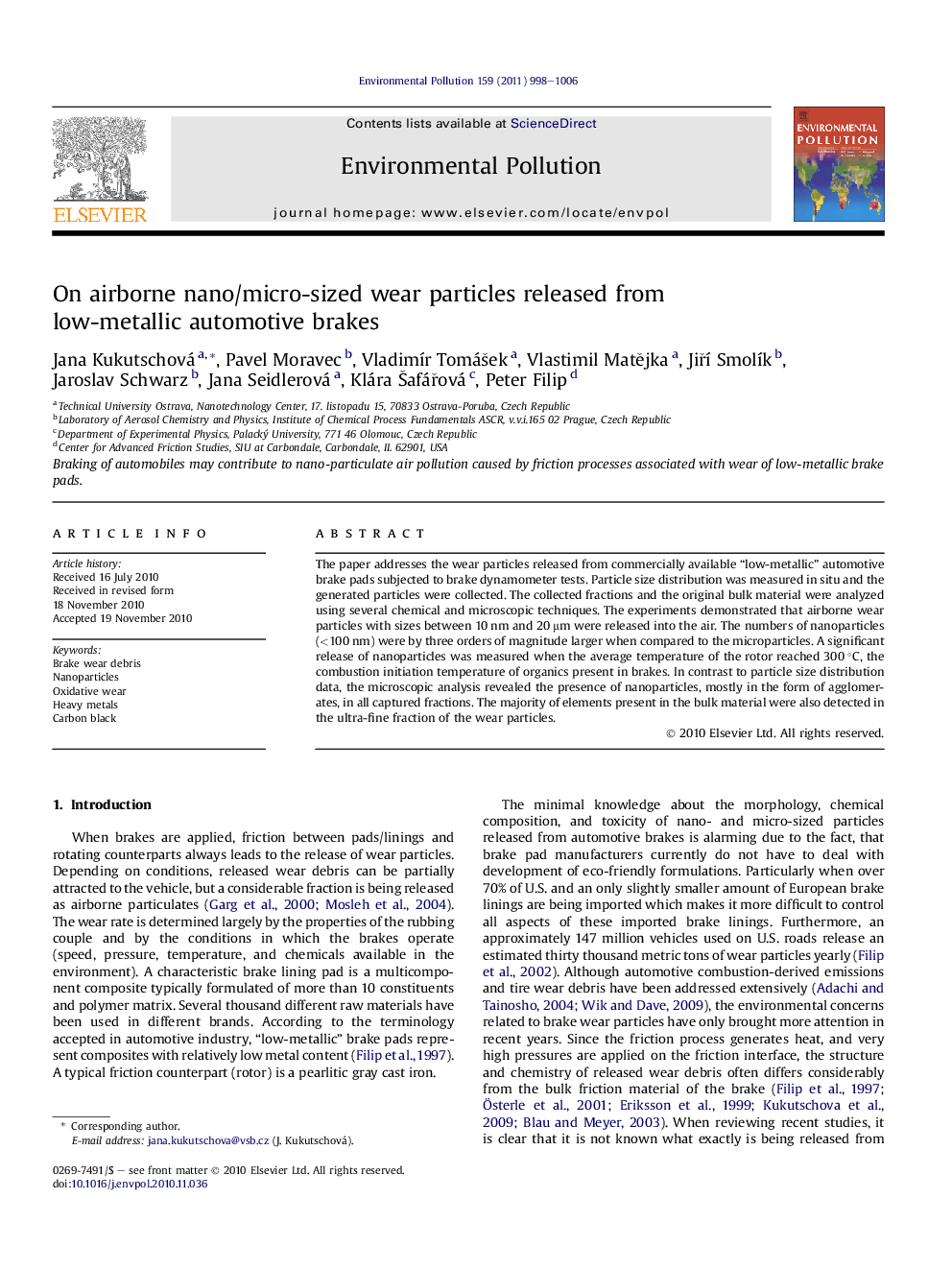| Article ID | Journal | Published Year | Pages | File Type |
|---|---|---|---|---|
| 4424853 | Environmental Pollution | 2011 | 9 Pages |
The paper addresses the wear particles released from commercially available “low-metallic” automotive brake pads subjected to brake dynamometer tests. Particle size distribution was measured in situ and the generated particles were collected. The collected fractions and the original bulk material were analyzed using several chemical and microscopic techniques. The experiments demonstrated that airborne wear particles with sizes between 10 nm and 20 μm were released into the air. The numbers of nanoparticles (<100 nm) were by three orders of magnitude larger when compared to the microparticles. A significant release of nanoparticles was measured when the average temperature of the rotor reached 300 °C, the combustion initiation temperature of organics present in brakes. In contrast to particle size distribution data, the microscopic analysis revealed the presence of nanoparticles, mostly in the form of agglomerates, in all captured fractions. The majority of elements present in the bulk material were also detected in the ultra-fine fraction of the wear particles.
Research highlights► Wear of low-metallic friction composite produces airborne nano-sized particles. ► Nano-sized particles contain carbon black and metallic compounds. ► Carbon black nano-sized particles are related to resin degradation. ► Number of nanoparticles higher by three orders of magnitude than microparticles.
